Recent Fire Damage Posts
Prevent Fires in Indiana and Indiana County with Professional Dryer Vent Cleaning
10/16/2024 (Permalink)
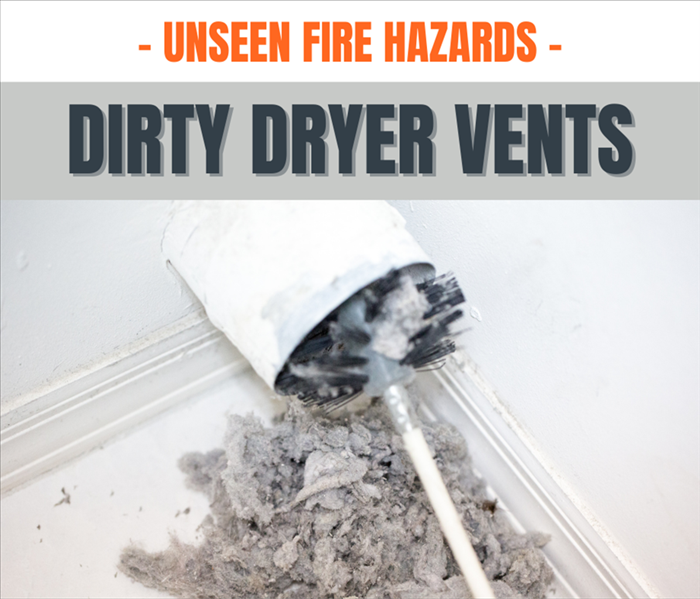 A dirty dryer vent is a hidden fire risk that may be lurking in your home.
A dirty dryer vent is a hidden fire risk that may be lurking in your home.
Fire cleanup in Indiana and throughout Indiana County often results from preventable issues like clogged dryer vents. Each year, many home fires are caused by neglecting this essential maintenance, leading to significant damage and the need for costly fire restoration. SERVPRO Team Weaver provides expert dryer vent cleaning services to help reduce fire risks and ensure your dryer operates efficiently. Regular vent cleaning is an important step in protecting your home from fire hazards and avoiding expensive repairs.
How Clogged Dryer Vents Can Cause Fires
When lint, dust, and debris accumulate in dryer vents, it restricts airflow and causes the dryer to overheat. This buildup creates a serious fire hazard, as lint is highly flammable. A single spark can ignite a fire, requiring fire cleanup in Indiana and other areas of Indiana County. According to the U.S. Fire Administration, one of the leading causes of home fires is the failure to clean dryer vents. Professional vent cleaning helps prevent this risk, keeping your home safe.
Why Choose Professional Dryer Vent Cleaning?
- Fire Prevention: Professional cleaning clears your vents, preventing overheating and reducing the chance of a fire.
- Better Efficiency: Clean vents help your dryer work more efficiently, lowering energy costs and reducing drying times.
- Extended Appliance Lifespan: A well-maintained dryer lasts longer, reducing the need for expensive repairs or replacement.
- Peace of Mind: SERVPRO Team Weaver uses specialized tools to thoroughly clean your dryer vents, ensuring they’re free of hazardous debris.
When Should You Clean Your Dryer Vents?
To prevent fire risks in Indiana County, it's recommended to have your dryer vents professionally cleaned at least once a year. If your dryer is taking longer to dry clothes or feels unusually hot, it’s time to schedule a cleaning as soon as possible.
Why You Shouldn’t Wait
Neglecting dryer vent cleaning increases the risk of home fires and can lead to carbon monoxide poisoning in homes with gas dryers. Additionally, a clogged vent forces your dryer to work harder, which can result in costly repairs or even replacement. Instead of waiting for a disaster, take preventative action today by scheduling a professional cleaning.
At SERVPRO Team Weaver, we are committed to helping homeowners in Indiana and throughout Indiana County avoid fire restoration needs by keeping their homes safe from fire hazards.
Contact SERVPRO Team Weaver for Dryer Vent Cleaning
If it’s been a while since your last dryer vent cleaning, now is the time to act. Contact SERVPRO Team Weaver for professional dryer vent cleaning services. Visit our website or call us at (724) 717-4098 to schedule your appointment today and reduce the risk of fire in your home.
Avoiding Common Pitfalls: Mistakes to Steer Clear of When Making a Fire Claim
8/14/2023 (Permalink)
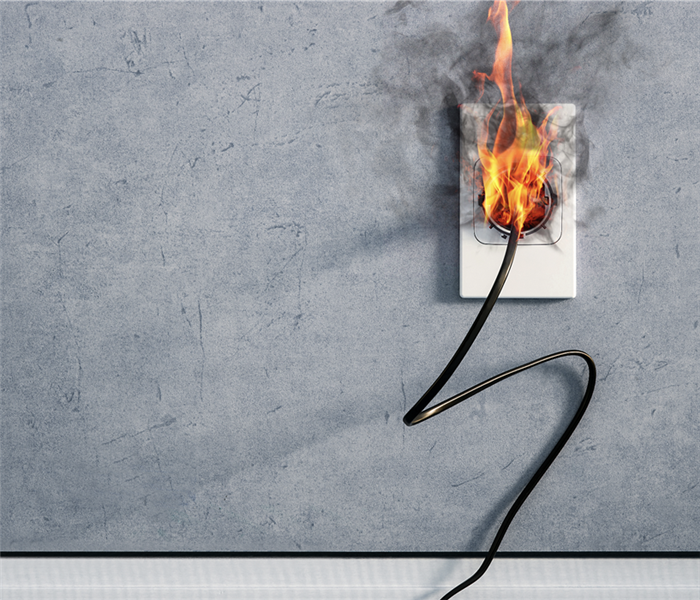 Filing a fire insurance claim can be a complex and overwhelming process.
Filing a fire insurance claim can be a complex and overwhelming process.
Filing a fire insurance claim can be a complex and overwhelming process, especially in the aftermath of a devastating event. To ensure a smooth and successful claim experience, it's crucial to avoid common pitfalls that could potentially jeopardize your claim. In this article, we will discuss the most common mistakes homeowners should steer clear of when making a fire claim and provide helpful tips to navigate the process effectively.
Delaying the Notification
One of the most significant mistakes homeowners make is delaying the notification of their insurance company. It's crucial to promptly report the fire incident and initiate the claims process. Contact your insurance provider as soon as possible to ensure a timely response and documentation of the damages.
Failing to Review the Insurance Policy
Before making a fire claim, thoroughly review your insurance policy to understand the coverage, limitations, deductibles, and any specific requirements for filing a claim. Being aware of the policy details will help you set realistic expectations and prevent misunderstandings during the claims process.
Neglecting Proper Documentation
Insufficient or incomplete documentation is a common pitfall. Take detailed photographs or videos of the fire damage, including the affected areas, personal belongings, and structural damage. Keep records of any related expenses, receipts, and communication with the insurance company to support your claim.
Discarding Damaged Property Prematurely
Avoid disposing of damaged property or making significant repairs before consulting with your insurance company. They may need to assess the damage firsthand and document the loss. Preserve the damaged property or belongings until the insurance adjuster has an opportunity to evaluate them.
Failing to Mitigate Further Damage
As a responsible homeowner, it's essential to take immediate action to prevent further damage after a fire. Failure to mitigate additional loss (e.g., water damage or vandalism) can result in complications during the claim process. Take necessary steps to secure the property and address immediate repair needs.
Not Seeking Professional Assistance
Navigating the complexities of a fire insurance claim can be overwhelming. Engaging a public adjuster or fire damage restoration professional can provide valuable expertise and support throughout the process. They can help assess the damage, document the loss, and negotiate with the insurance company on your behalf.
Miscommunication with the Insurance Company
Clear and consistent communication with your insurance company is vital. Be honest and accurate when providing information about the incident and the damages. Keep records of all conversations, including dates, times, and the names of the individuals you spoke with.
Settling for an Inadequate Settlement
Avoid accepting an initial settlement offer without carefully evaluating its fairness and adequacy. Review the proposed settlement in light of your policy coverage, the extent of the damages, and any additional expenses you may incur during the recovery process. Consult with professionals or seek legal advice if necessary.
Overlooking Additional Living Expenses
If your home is temporarily uninhabitable due to fire damage, you may be eligible for coverage of additional living expenses. This can include costs for temporary accommodation, meals, and other necessary expenses. Keep track of these expenses and ensure they are included in your claim.
Missing Deadlines
Insurance policies typically have specific deadlines for filing a claim or providing supporting documentation. Missing these deadlines can lead to claim denial or delays. Stay organized, understand the timeline, and adhere to the specified requirements to ensure your claim is processed smoothly.
Making a fire insurance claim can be a challenging process, but by avoiding common pitfalls, you can improve your chances of a successful outcome. Promptly report the incident, thoroughly document the damage, and communicate effectively with your insurance company. Seek professional guidance when needed, review your policy carefully, and be proactive in meeting deadlines. By avoiding these common mistakes, you can navigate the fire claim process with greater confidence and maximize your chances of receiving fair compensation to aid in your recovery.
7 Essential Steps to Take If Your House is on Fire
4/17/2023 (Permalink)
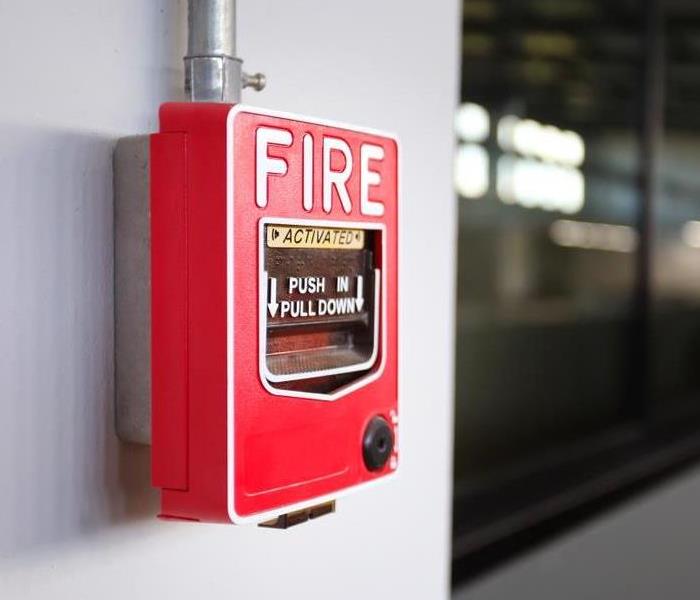 By remaining calm and taking the proper steps, you can ensure the safety of yourself and your loved ones.
By remaining calm and taking the proper steps, you can ensure the safety of yourself and your loved ones.
A house fire can be a devastating experience for any homeowner. In the event of a fire, it is important to remain calm and take the proper steps to ensure the safety of yourself and your loved ones. Here are the steps to take if your house is on fire:
Step 1: Get Out Immediately
The first and most important step in the event of a house fire is to get out of the house immediately. Do not attempt to grab any belongings or valuables, as these can be replaced. If there are other people in the house, make sure they are aware of the fire and are also evacuating. If possible, use the closest exit to escape the house.
Step 2: Call 911
Once you are safely outside, call 911 immediately. Provide the operator with your name, address, and a brief description of the situation. Stay on the line until the operator tells you it is safe to hang up.
Step 3: Stay Outside
Do not re-enter the house for any reason. Even if the fire appears to be small or contained, it can spread quickly and become dangerous. Wait for the fire department to arrive and handle the situation.
Step 4: Alert Neighbors
If you have neighbors nearby, alert them to the situation and ask if they can offer any assistance. They may be able to provide a place for you to wait while the fire department works to extinguish the fire.
Step 5: Follow Up with Insurance
After the fire has been extinguished and the situation is under control, contact your insurance company to file a claim. Be sure to provide a detailed list of damages and any personal belongings that were lost in the fire.
Step 6: Seek Professional Restoration Services
Once the fire department has given the all-clear to enter your home, it is important to seek professional restoration services. These professionals can help with the cleanup and restoration process, including removing any water damage and smoke damage.
Step 7: Take Preventative Measures
After the fire has been extinguished and your home has been restored, it is important to take preventative measures to reduce the risk of a future fire. This includes installing smoke detectors in every room of your home, having a fire escape plan in place, and ensuring that all electrical wiring and appliances are up to code and properly maintained.
In conclusion, a house fire can be a traumatic experience for any homeowner. However, by remaining calm and taking the proper steps, you can ensure the safety of yourself and your loved ones. Remember to evacuate immediately, call 911, stay outside, alert neighbors, follow up with insurance, seek professional restoration services, and take preventative measures to reduce the risk of a future fire. By taking these steps, you can recover from a house fire and move forward with your life.
Best Ways To Extinguish a Grease Fire
7/12/2022 (Permalink)
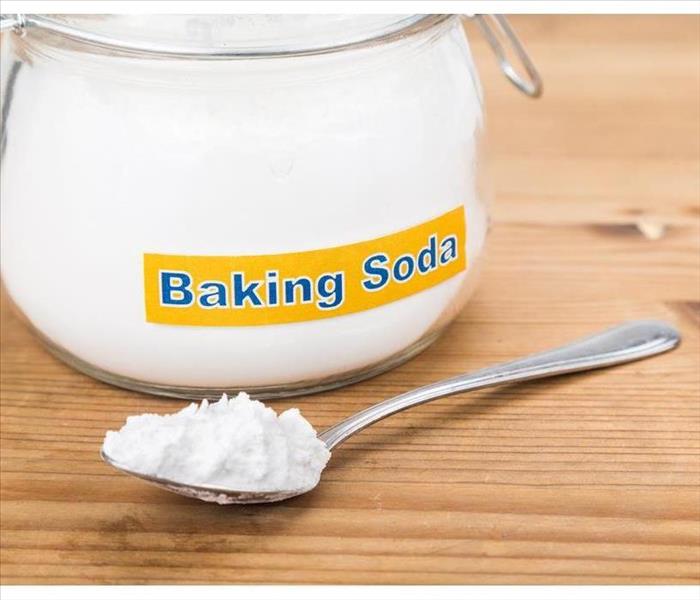 Try pouring a generous amount of baking soda on the flames.
Try pouring a generous amount of baking soda on the flames.
The Best Methods For Putting Out A Grease Fire
The kitchen can be an ideal place to mingle with family and friends. Here, you can cook your favorite dishes and enjoy your creations. A kitchen is also a common place in the home where fires start. One of the most notorious types of fire is the grease fire. This unique challenge can quickly get out of hand and spread. If you don’t know how to properly put it out, you could be in for some terrible consequences.
Cover it Up
If you’re frying or grilling something tasty, but the grease ignites some flames, you need to act quickly before the fire finds its way to other parts of the kitchen and your Loop, PA, home. Your first steps are critical.
- Grab a nearby metal lid and place it over the top of the flames.
- Use a cookie sheet to cover the area where the fire started.
- Leave the lid or cookie sheet in place until it is cool.
Do not use Water
As a child, you learned water can quickly put out fires. However, this isn’t the case with grease fires. In fact, this can cause the fire to spread. If you have a grease fire, never use water.
Try Baking Soda
Hopefully, you’ll have some baking soda in the cabinets of your kitchen. If covering the fire isn’t working, or if the fire has gotten too large, try pouring a generous amount of baking soda on the flames. This should smother it and extinguish the flames. This will make your fire cleanup a little messy, but it will save you extensive damage and heartache. It’s important to not use similar materials such as flour or baking powder.
No one wants to see a grease fire at home. The good news is that if you know how to act promptly by using these strategies, you can put an end to the fire before it causes major problems.
Why Is Water Damage Present After a Commercial Fire?
5/23/2022 (Permalink)
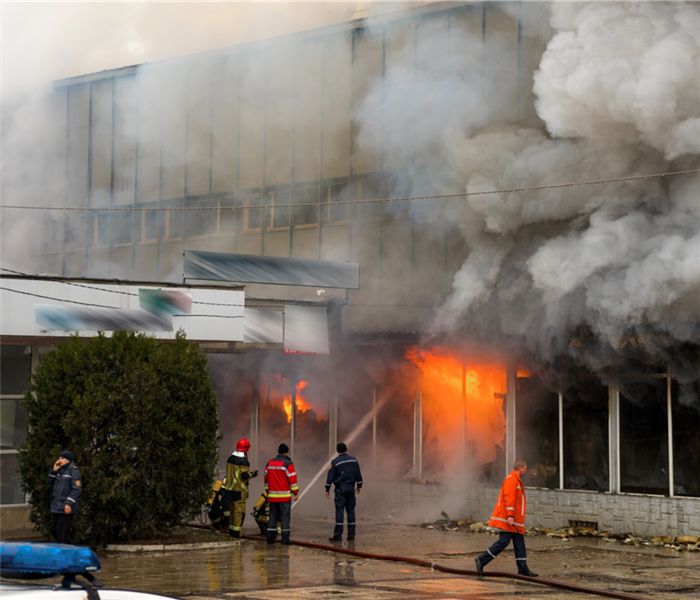 Water used by firefighters is the most common after extinguishing a fire.
Water used by firefighters is the most common after extinguishing a fire.
After a Commercial Fire, Why Is There Water Damage?
When your Canoe Ridge, PA, business is affected by fire, you might expect fire damage such as smoke, soot and ash, along with property damage and weakened structures. However, you can also find a surprising amount of water throughout the area. Find out more about why this damage appears, how it affects your business and how to respond to it.
Causes of Water Damage
Despite the overwhelming presence of fire and the residue, it leaves behind, some of the damage you might see in the aftermath can involve water. The most likely causes behind this impact include:
- Fire hose water
- Fire sprinkler system
- Damaged water pipes
- Destroyed water containers
Water used by firefighters is the most common since they use several gallons to extinguish the fire. Meanwhile, sprinklers are set up to use water more efficiently and leaks from pipes and containers are less frequent.
Consequences of Excess Water
While the present fire damage is understandably the main concern, the effects of water on your property can be just as devastating. Wooden flooring can warp once it dries, while the wet carpet is difficult to repair, especially when it is combined with other contaminants. Drywall can become vulnerable and need replacement, while weakened ceilings can endanger the rest of your building. Additionally, if the water is not removed fast enough, you could risk a mold infestation.
Possible Solutions to Damage
You can avoid all of these risks by working with commercial building restoration services. These qualified technicians are already familiar with all types of business property damage, so they can treat fire and water-based destruction. They can fix or replace affected flooring depending on the severity. Damaged drywall and ceilings are carefully inspected and replaced to keep the structure sound. Vacuums, sump pumps and more resources are used to dry and clean surfaces, preventing mold.
Water can be just as impactful as fire damage, especially when it is not detected and treated on time. The best remediation strategy can anticipate and address all sorts of damage to improve your business over time.
How Fire Sprinklers Work During a Fire
3/23/2022 (Permalink)
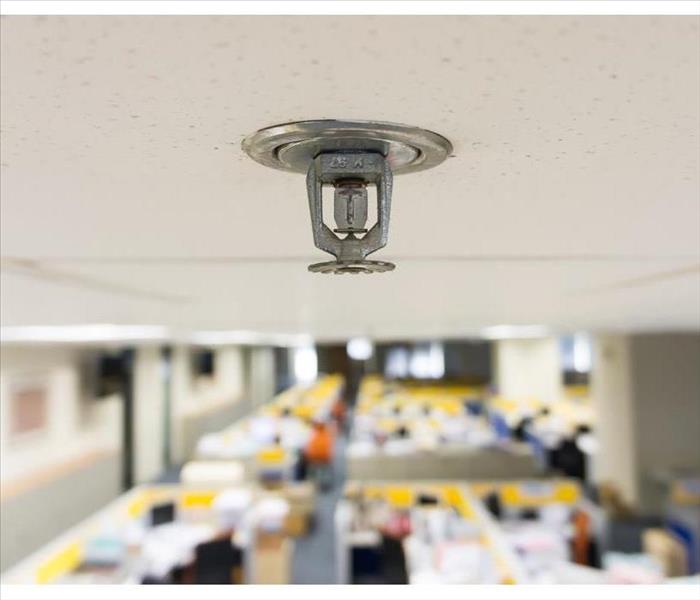 In the event of a fire, a reliable fire sprinkler system can save lives.
In the event of a fire, a reliable fire sprinkler system can save lives.
How Do Fire Sprinklers Work?
In the event of a fire, a reliable fire sprinkler system can save lives. Equipping your commercial building in South Bend, PA, with sprinklers also significantly reduces property loss and damage. To protect all of your employees and keep your building safe, it’s crucial to have a fire suppression system installed and functioning properly. Here are the different ways a sprinkler works to extinguish a fire.
Detects Heat
While the presence of smoke sets off a smoke detector, sprinkler systems are mainly triggered by heat. As soon as a spark appears, the following takes place:
- Air surrounding fire heats up
- Heated air rises towards ceiling
- Sprinkler head senses heat and activates
Detecting heat is an essential feature of a fire sprinkler because it enables it to drown out the fire as soon as possible. Making sure your system is in good shape is necessary in order to be prepared for a real fire.
Douses the Flames
Once the sprinkler has sensed heat around it, it releases pressurized water. The water comes from a pipe system that connects to a water source outside the building. After heat causes the sprinkler to activate, a valve in the sprinkler head opens and water flows out. Because the water is pressurized, it is able to douse the fire completely and ensure that it is safely extinguished.
Keeps Water Confined to Area of Fire
When the heat rises towards the ceiling, only the sprinkler head closest to the heat source activates while the other sprinklers stay sealed. This can prevent excessive water damage from harming your building. However, the water that flows from the one or two active sprinklers can still cause harm to your building, which is why it is vital to contact a professional and schedule a fire sprinkler cleanup immediately.
If your building in South Bend, PA, has water damage as a result of fire sprinkler activation, don’t wait to call for help. A water damage repair specialist can help restore your business in no time.
After a Commercial Fire: What Now?
1/23/2022 (Permalink)
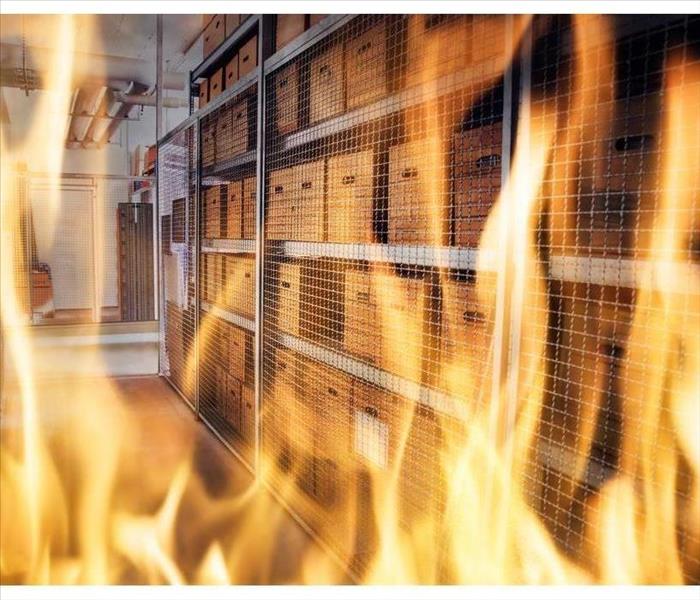 Fire in a warehouse in Two Lick, PA.
Fire in a warehouse in Two Lick, PA.
Prepare for a Commercial Fire
As a business owner in Two Lick, PA, you need to be prepared for the consequences of a commercial fire. You should be ready to deal with possible expenses due to the cost of fire restoration and time lost while your business is closed. Luckily, you can greatly minimize the loss of time and money by taking the following steps.
1. Talk to Your Insurance Company
Contact your fire insurance company right away to let them know what's happened. The sooner you can file a claim and get an adjuster out to look at the damage, the sooner they can release the funds you need to get your building repaired and restored.
2. Call a Professional Fire Mitigation Company
Next, you should seek out the services of a fire restoration company. These professionals can come out immediately to do any needed emergency repairs and make a thorough inspection. They will then begin the process of removing any excess water left behind by fire hoses, smoke cleaning, and repair and restoration of the building.
3. Assessing Damage and Removing Property
When you can enter the building again, take care to wear a breathing mask to protect yourself from lingering smoke. Make an inventory of equipment that's been damaged, such as computers, phones, important documents and any other items. The insurance company will need this information for any possible reimbursement. Try to salvage as much equipment as possible. Much of it may be usable after a careful professional cleaning.
5. Bring in an Arson Investigation Team
It's a good idea to hire a forensics team to determine if there was any foul play. If there was arson involved, your insurer needs this information. If a guilty party is found, they may want to file charges and recover their costs.
Hopefully, you won't ever have to deal with fire restoration in your place of business. But if so, you'll be ready to take quick action by using the information outlined above.





 24/7 Emergency Service
24/7 Emergency Service






